Discover Pandipedia
Pandipedia is the world's first encyclopaedia of machine generated content approved by humans. You can contribute by simply searching and clicking/tapping on "Add To Pandipedia" in the answer you like. Learn More
Expand the world's knowledge as you search and help others. Go you!

An engineer able and willing to undertake this great work was found in the person of the late Robert Stevenson of Edinburgh, whose perseverance and talent shall be commemorated.
Unknown[1]
Stevenson's Bell Rock Lighthouse shall tower above the sea.
Unknown[1]

…grandest and most useful monument ever raised by man, as long as the Bell Rock lighthouse shall tower above the sea.
Unknown[1]
Stevenson's Bell Rock Lighthouse
Unknown[1]
It may be found, however, in minute detail, in the large and interesting work entitled, 'Stevenson's Bell Rock Lighthouse.'
Unknown[1]
Let's look at alternatives:
- Modify the query.
- Start a new thread.
- Remove sources (if manually added).
- Request a manual search from our human research team.
What is a Biome?
A biome is defined as a large geographic biotic unit, a major community of plants and animals with similar life forms and environmental conditions. Biomes are categorically divided based on their climate, types of vegetation, and the animals that inhabit them. There are two major groups: terrestrial (land-based) and aquatic (water-based) biomes[4][11][12].
Major Types of Terrestrial Biomes
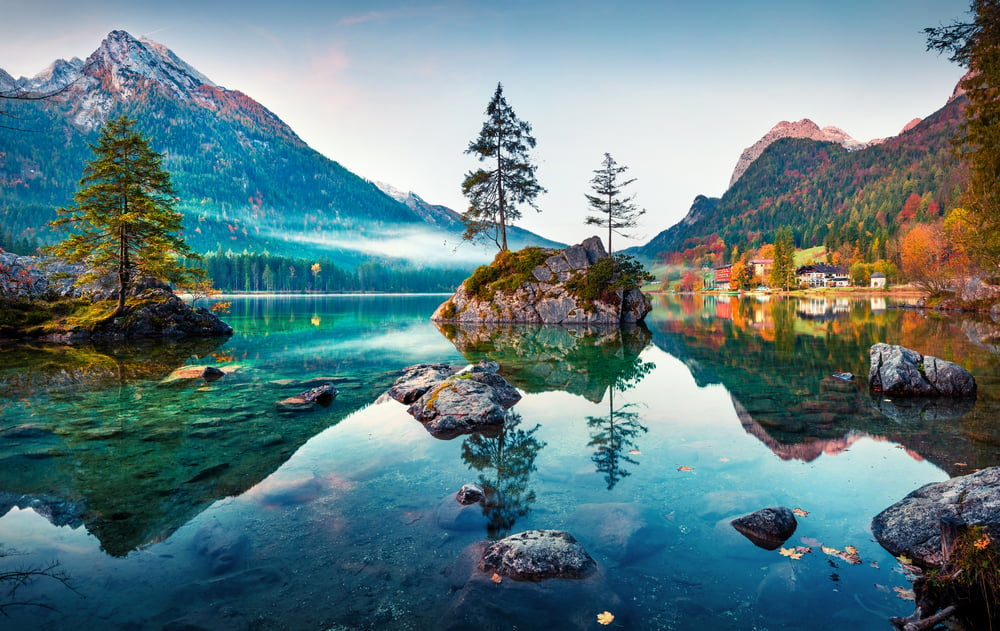
Tropical Rainforest
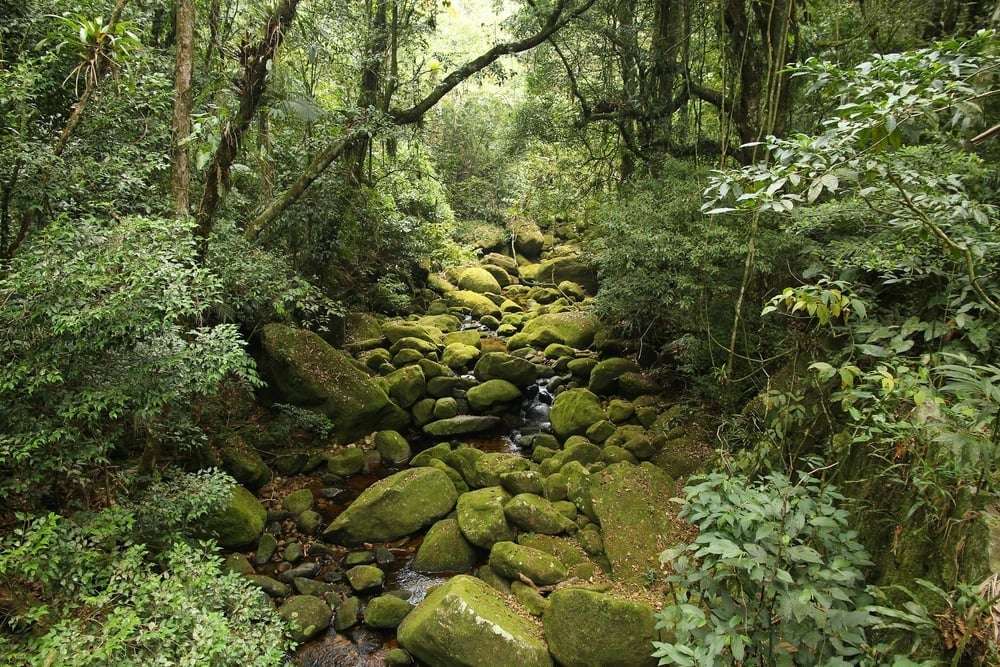
Tropical rainforests are located near the equator and are known for their high levels of rainfall and biodiversity. They have a warm, humid climate all year round. These biomes are highly productive and rich in species, including numerous types of trees, vines, ferns, and flowering plants. Common animals found in tropical rainforests include monkeys, parrots, jaguars, and a vast variety of insects[2][3][11].
Temperate Forest
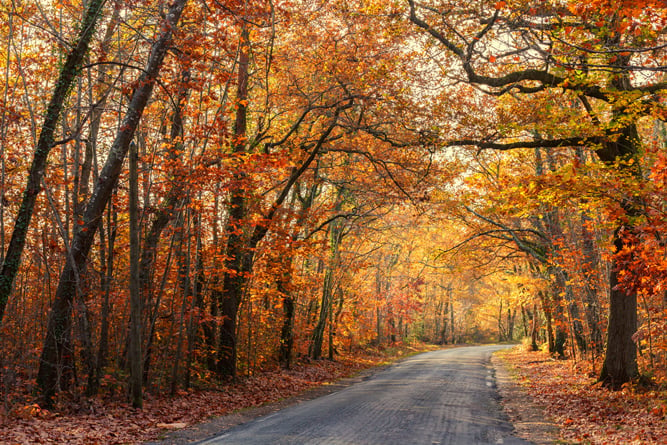
These forests experience all four seasons and are found in regions including North America, Europe, and Asia. Temperate forests host a mix of deciduous trees such as oak and maple, which shed their leaves annually, and evergreen conifers. They boast diverse animal life including deer, bears, foxes, and various species of birds and insects[3][4][6].
Taiga (Boreal Forest)
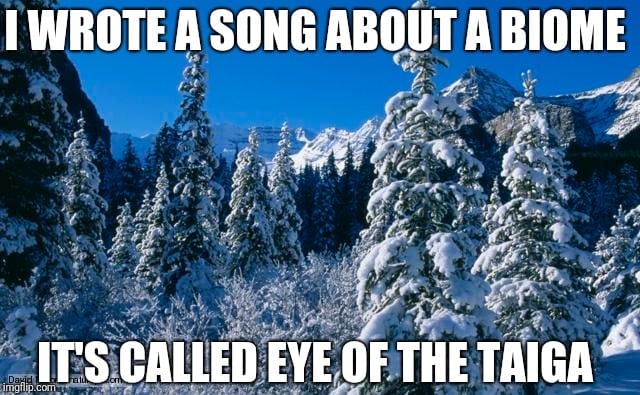
The taiga, or boreal forest, is the largest terrestrial biome, characterized by long, cold winters and short, wet summers. These forests are mostly composed of coniferous trees like pine, spruce, and fir. Animal life includes species such as bears, moose, wolves, and a variety of small mammals and birds[2][4][11].
Desert
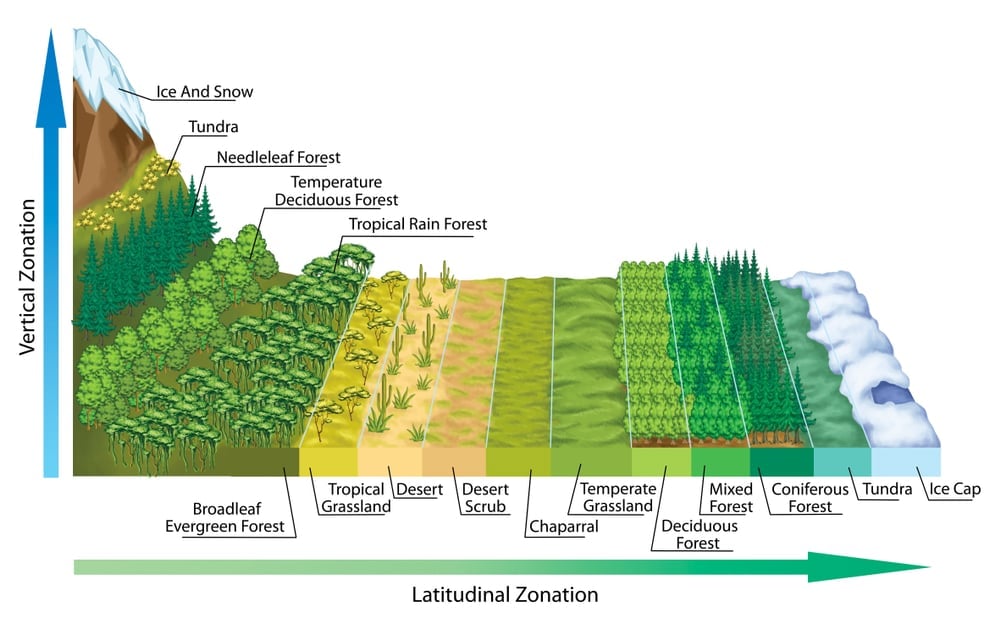
Deserts are arid regions receiving less than 25 cm of rain per year. They can be hot, like the Sahara, or cold, like Antarctica. Desert vegetation is adapted to conserve water, with plants like cacti and hardy shrubs. Animals have adaptations such as burrowing and nocturnal activity to escape extreme temperatures; common desert inhabitants include camels, lizards, and scorpions[2][3][11].
Tundra
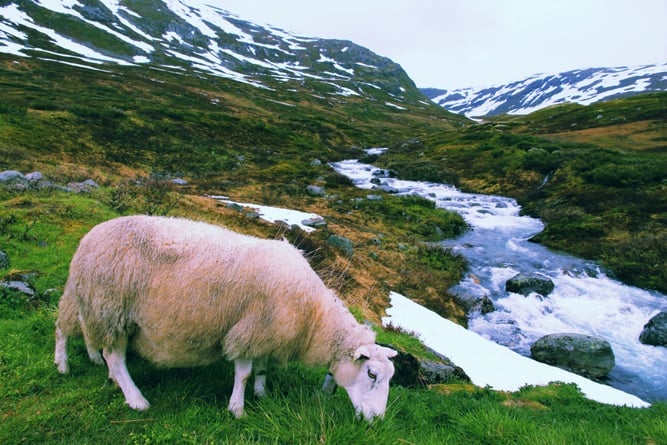
The tundra is the coldest biome, characterized by permafrost, or permanently frozen subsoil. Found in high latitudes around the Arctic Circle, it has low biodiversity and simple vegetation forms like mosses, lichens, and small shrubs. Tundra fauna includes the Arctic fox, polar bear, and caribou[2][3][11].
Grasslands

Grasslands are vast open areas dominated by grasses and few trees. These biomes can be found in both tropical (savannas) and temperate regions (prairies and steppes). They have fertile soil and are home to animals such as zebras, lions, and antelopes in the savannas, and buffalo, deer, and wolves in temperate grasslands[2][3][4][11].
Mediterranean (Shrubland)
Characterized by hot, dry summers and mild, wet winters, Mediterranean biomes, also known as chaparrals, have dense vegetation of shrubs and small trees. These biomes are found in regions like southern California and the Mediterranean Basin. Typical flora includes drought-resistant plants and fauna such as coyotes, jackrabbits, and various bird species[4][11].
Major Types of Aquatic Biomes

Freshwater Biomes
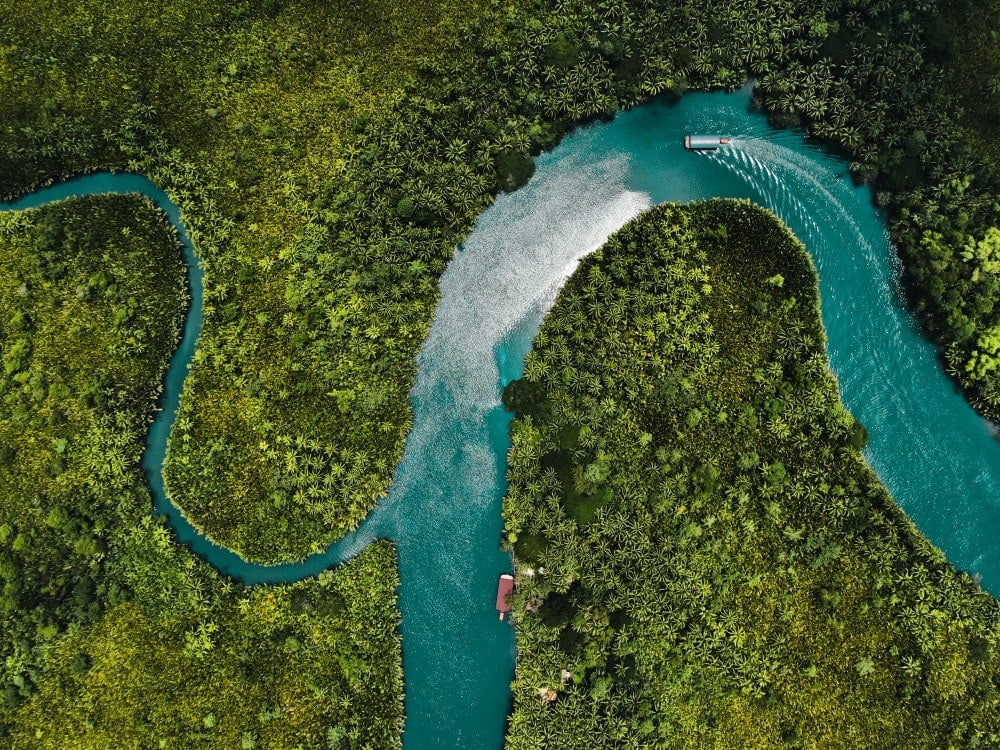
Freshwater biomes include lakes, rivers, ponds, and wetlands with low salt concentration. These biomes support a variety of plant and animal life, including fish, amphibians, and numerous types of insects. Certain lakes and rivers are known for their endemic species, such as Lake Baikal[2][3][4][11].
Marine Biomes

Covering about 70% of the Earth's surface, marine biomes include oceans, coral reefs, and estuaries. They are characterized by saltwater and host diverse ecosystems. Coral reefs, often called the 'rainforests of the sea,' are particularly biodiverse. Marine life includes fish, marine mammals, seabirds, and invertebrates[2][3][4][11].
Polar Oceans
Found in the Arctic and Southern Oceans, these biomes are some of the most biodiverse due to their cold, nutrient-rich waters. They support extensive plankton communities, which are the basis of complex food webs including whales, seals, and various seabirds[5].
Conclusion
Biomes are integral to our understanding of Earth's ecological diversity. They are defined by specific climatic conditions and host unique communities of plants and animals adapted to their environments. From the scorching deserts to the frigid tundras, each biome plays a crucial role in the planet's overall ecosystem.
Understanding these biomes helps us appreciate the complexity of our natural world and underscores the importance of preserving these vibrant, life-supporting environments.
The content provided is strictly based on the information extracted from the listed sources[1][2][3][4][5][6][7][8][9][10][11][12].
Let's look at alternatives:
- Modify the query.
- Start a new thread.
- Remove sources (if manually added).
- Request a manual search from our human research team.
Get more accurate answers with Super Search, upload files, personalised discovery feed, save searches and contribute to the PandiPedia.
Let's look at alternatives:
- Modify the query.
- Start a new thread.
- Remove sources (if manually added).
- Request a manual search from our human research team.
Let's look at alternatives:
- Modify the query.
- Start a new thread.
- Remove sources (if manually added).
- Request a manual search from our human research team.

Films have long served as a mirror to society, encapsulating its complexities, challenges, and changes. Through engaging narratives and strong visuals, cinema not only entertains but also provokes thought, raises awareness, and inspires dialogue about pressing social issues.
Storytelling as a Medium for Change

At its core, cinema is a powerful storytelling medium that captures the human experience, making it an ideal platform for addressing societal issues. By portraying characters who confront these challenges, films foster empathy among audiences, bridging the gap between different experiences and perspectives. As noted, 'when audiences connect with characters facing these issues on screen, they become more empathetic and informed about the challenges others face in real life'[2]. This capacity for storytelling enables films to spark conversations around complex societal matters, encouraging viewers to engage critically with the issues presented.
Films as Awareness-Generators
Many films effectively create awareness about various social issues, shedding light on aspects of society that might otherwise remain obscured. They prompt viewers to think critically, highlighting the impacts and implications of the challenges being faced. It's highlighted that films 'can shed light on the complexities of certain societal aspects' and often serve as 'conversation starters,' facilitating discussion on topics that might otherwise be difficult to approach[2][3]. Through compelling narratives, filmmakers can cultivate a deeper understanding of issues like poverty, racism, addiction, and gender equality, among many others.
Redefining Perspectives and Challenging Stereotypes

The film industry plays a significant role in challenging stereotypes and reshaping societal perceptions. By presenting well-developed characters and diverse narratives, films can help deconstruct biases and misconceptions. This is particularly impactful in films that showcase marginalized communities, allowing for a better understanding of their struggles and triumphs. As highlighted, many filmmakers employ their craft as a form of advocacy, utilizing documentaries and themed narratives to address social injustice[4][5].
Examples of this can be observed in documentaries that focus on crucial issues such as environmental degradation, systemic racism, and socio-economic inequalities. These works not only present facts but also personal stories that resonate emotionally with viewers, making the issues more relatable and pressing.
Creating a Dialogue Around Social Issues
Movies often serve as a catalyst for dialogue, encouraging discussions that promote greater awareness and understanding. They provide a common ground for audiences to discuss difficult concepts, which can lead to greater social consciousness. For instance, recent films addressing police violence and systemic racism have ignited conversations around these critical issues, often paralleling real-world movements such as Black Lives Matter[3][8]. This capacity for provoking dialogue is a vital component of how films can affect societal change, as they often present perspectives that challenge the status quo.
Films Driving Action and Advocacy

Beyond awareness and conversation, films have the potential to inspire action. By showcasing the resilience of individuals facing adversity, cinema can motivate viewers to pursue their own dreams while spurring them to contribute to societal change. This transformative impact is emphasized in the idea that films can be 'a call to action' rather than mere entertainment[2][4]. Works like 'Blackfish' have dramatically influenced public opinion and corporate practices, demonstrating how powerful storytelling can lead to tangible societal effects.
The role of documentaries in this process cannot be overstated. Documentaries often tackle difficult subjects head-on, revealing uncomfortable truths about societal issues, from human trafficking to climate change. As stated, documentaries 'shine a light on the social and environmental changes we urgently need to see' and reflect the collective concerns of the communities they depict[7][10].
The Risks of Misrepresentation
While films can have significant positive impacts, there is also the risk of perpetuating harmful stereotypes or narratives. Content that is insensitive or misrepresents the communities it seeks to portray can do more harm than good. Films need to handle sensitive subjects thoughtfully to avoid reinforcing stereotypes or marginalizing the voices they intend to represent. The ongoing dialogue in Hollywood regarding representation and authenticity highlights the industry's recognition of this critical aspect[3][4].
Conclusion

Ultimately, films serve as a powerful instrument for reflecting societal issues, simultaneously educating and inspiring audiences. Through storytelling, awareness-raising, challenging stereotypes, and advocacy, the film industry contributes significantly to social discourse and has the potential to drive meaningful change. The reflections of society portrayed in cinema can engage viewers not just in entertainment but also in critical discussions about the world we live in and the improvements that need to be made. As viewers, supporting films that approach these issues ethically strengthens their potential impact on society, illustrating that the magic of cinema extends far beyond the screen into the hearts and minds of individuals ready to engage with pressing global issues.
Let's look at alternatives:
- Modify the query.
- Start a new thread.
- Remove sources (if manually added).
- Request a manual search from our human research team.

The text indicates that 75% of Global Chief Marketing Officers (CMOs) are using or testing AI tools[1].
The statistic comes from a survey conducted in July 2024 with 300 marketing executives at companies with 500+ employees worldwide[1]. The survey covers various geographical locations, including Australia, Belgium, Brazil, Canada, China, Denmark, Finland, France, Germany, Ireland, Italy, Japan, Luxembourg, Mexico, Netherlands, Norway, Poland, Saudi Arabia, Spain, Sweden, UAE, UK, & USA[1].
Let's look at alternatives:
- Modify the query.
- Start a new thread.
- Remove sources (if manually added).
- Request a manual search from our human research team.
Get more accurate answers with Super Search, upload files, personalised discovery feed, save searches and contribute to the PandiPedia.
Let's look at alternatives:
- Modify the query.
- Start a new thread.
- Remove sources (if manually added).
- Request a manual search from our human research team.

Black holes are some of the most enigmatic objects in the universe, formed under extreme conditions that can be difficult to comprehend. They primarily arise from the death of massive stars and exist in different mass categories, including stellar, supermassive, and intermediate-mass black holes.
Stellar Black Holes
Stellar black holes are formed when massive stars, typically those exceeding 20 times the mass of the Sun, exhaust their nuclear fuel. Once this happens, the star's core collapses under its own weight, leading to a supernova explosion that expels the outer layers of the star. If the remaining core is more than approximately three solar masses, it collapses completely into a black hole, creating a singularity—a point of infinite density—surrounded by an event horizon, beyond which no light or matter can escape[2][9].
Supermassive Black Holes
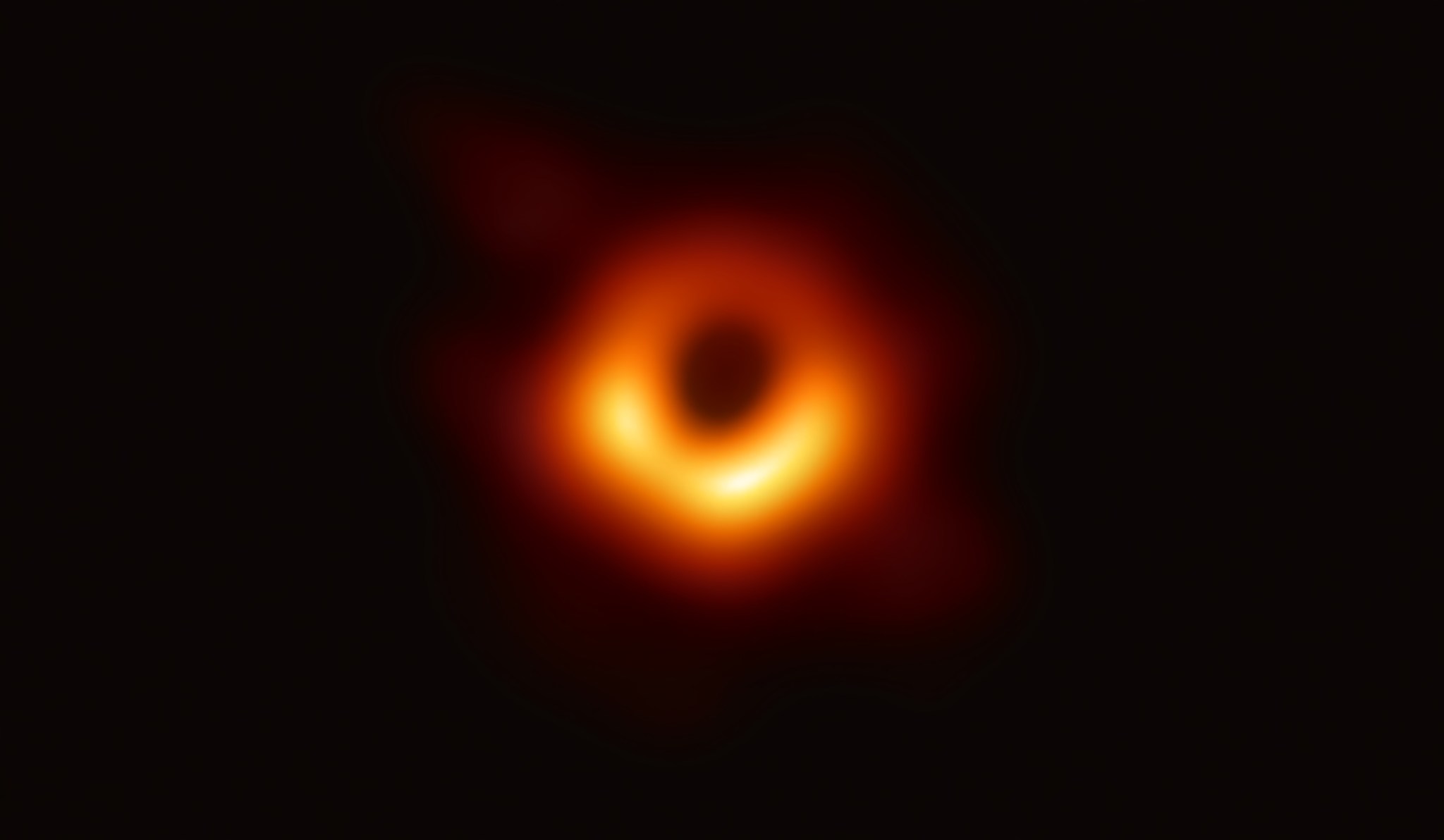
Supermassive black holes (SMBHs), found at the centers of most galaxies, are believed to have origins that are not yet fully understood. They can weigh millions to billions of times more than the Sun. The current leading theories suggest that they might have formed from the merging of smaller black holes or through the rapid accretion of gas and matter in the early universe[6][10]. Evidence suggests that these black holes existed very early in the cosmic timeline, hinting at complex formation processes involving primordial black holes or large clouds of gas collapsing directly into massive entities[10].
Intermediate-Mass Black Holes

An intermediate class of black holes, weighing between 100 and 10,000 solar masses, was once considered theoretical, but recent discoveries indicate they may exist. These black holes could form from the collapse of stars in dense star clusters or from the merger of smaller black holes[3][6][10]. The existence of these intermediate-mass black holes is critical for understanding the evolutionary pathways that lead to either stellar or supermassive black holes.
Impact on the Universe
Black holes significantly influence their surroundings and play a vital role in the evolution of galaxies. Their immense gravitational pull can shape the formation and structure of neighboring stars and galaxies.
Gravitational Influence

The gravitational fields of black holes are so strong that they pull nearby stars and gas into orbit around them, forming what is known as an accretion disk. This disk consists of rotating plasma that becomes heated to extreme temperatures due to friction and gravitational forces, emitting X-rays in the process[11][4]. The materials that do not fall into the black hole may be ejected outward in powerful jets of particles, influencing the surrounding interstellar medium and possibly triggering new star formation, depending on the dynamics at play[5][8].
Regulation of Star Formation
There is strong evidence that the energy output from black holes can regulate star formation in their host galaxies. As black holes consume matter, they can emit immense amounts of energy, which can heat surrounding gas, preventing it from cooling and condensing into new stars[6][10]. This feedback mechanism has been observed to play a crucial role in various galaxy types, particularly in elliptical galaxies that show a decline in star formation correlated with the activity of their central black holes[1][10].
Role in Cosmic Evolution
The activity of black holes, particularly during their quasar phase, can have profound effects on galaxy evolution. Quasars, which are powered by supermassive black holes actively consuming gas, can outshine entire galaxies. This extreme luminosity influences the galactic environment over vast distances, potentially altering star formation rates and the dynamics of surrounding gas[6][10][11]. In this way, black holes can be seen not merely as end states of stellar evolution but as active participants in the cosmic ecosystem, driving processes that dictate the formation and evolution of galaxies.
Conclusions
In summary, black holes are formed from the remnants of massive stars and can grow through the accretion of surrounding matter and mergers with other black holes. Their presence impacts the universe by influencing star formation, shaping the structure of galaxies, and playing essential roles in the evolution of cosmic systems. As ongoing research continues to unveil their mysteries, black holes remain a fundamental area of interest in astrophysics, providing key insights into the nature of gravity, cosmic evolution, and the conditions necessary for the emergence of life[4][10].
Let's look at alternatives:
- Modify the query.
- Start a new thread.
- Remove sources (if manually added).
- Request a manual search from our human research team.
Let's look at alternatives:
- Modify the query.
- Start a new thread.
- Remove sources (if manually added).
- Request a manual search from our human research team.

Festivals serve as significant cultural events that shape and reflect community identity, offering a platform for social connection, cultural continuity, and even economic benefits. This report synthesizes various aspects of how festivals impact community identity, drawing insights from studies on community festivals and urban cultural heritage festivals.
Festivals as Transformative Experiences
Community festivals, as described in one source, are traditionally organized by and for local communities, often emphasizing themes that resonate with community members. These gatherings provide residents with opportunities to engage socially, enhancing community cohesion and building social capital. When residents participate in these events—whether as volunteers, attendees, or organizers—they often develop a more profound sense of belonging and pride in their local identity. The engagement fosters social interactions, relationship building, and the development of networks that contribute positively to community well-being and identity[1].
The sentiment around participation is emphasized further, noting that residents who are actively involved in festivals are generally those who perceive the social impacts of these events more positively. They experience benefits such as enhanced community identity, cohesion, and opportunities for entertainment and socialization. This can be seen in diverse subgroups within populations, each experiencing festivals differently, leading to varied perceptions of their impacts[1].
Urban Cultural Heritage Festivals and Identity
Urban cultural heritage festivals, such as London's Notting Hill Carnival, illustrate how larger scale events not only serve as entertainment but also play a crucial role in expressing and shaping identity. These festivals are platforms for showcasing the values and traditions of diverse cultural backgrounds and can promote community cohesion among participants. The Notting Hill Carnival, rooted in African Caribbean culture, has evolved from a local celebration into a significant cultural event that attracts a wide audience, thus contributing to a sense of belonging and shared identity among different demographic groups. The carnival embodies the integration of various cultures, echoing sentiments of unity amidst diversity[3].
Such festivals are important for representing communal values and creating a collective identity that transcends individual backgrounds. They celebrate cultural heritage and offer spaces for historical narratives to be performed and experienced, which fosters stronger ties among community members and cultivates pride in their shared cultural identity[3]. Festivals become not only a means to celebrate cultural legacies but also a way to negotiate contemporary identities in an increasingly globalized world[2].
Challenges and Balancing Acts
While festivals can enhance community identity, they also present challenges that can impact the sense of belonging. Issues such as gentrification and the commercialization of festivals may lead to tensions within communities. For example, the Notting Hill Carnival has encountered challenges as the neighborhood experiences changes due to rising property values and a shift in demographic composition. Some long-term residents feel alienated by the influx of newcomers who may not share the same appreciation for the cultural significance of the carnival[3]. These dynamics highlight the delicate balance between cultural celebration and the risk of losing authentic community connections as urban environments evolve.
Moreover, concerns regarding the negative impacts of large gatherings, such as anti-social behavior and logistics, can detract from the positive community impacts of festivals. The intensity of events can sometimes overshadow their intended community-building functions, leading to questions about their sustainability and long-term benefits for social cohesion[3].
Conclusion: Festivals as Catalysts for Identity Formation
Overall, festivals are pivotal in shaping and reinforcing community identity. They provide spaces for cultural expression, social interaction, and community building, thereby enhancing social capital and cohesion within communities. As evidenced by community and urban cultural heritage festivals, these events play a crucial role in expressing communal values and fostering diverse identities. However, the challenges faced by communities in adapting to changes that accompany these festivals must be navigated thoughtfully to preserve the authentic cultural connections that festivals aim to celebrate. The interplay between celebration and identity, alongside the evolving urban landscape, continues to shape how communities forge and redefine their identities in contemporary contexts.
Let's look at alternatives:
- Modify the query.
- Start a new thread.
- Remove sources (if manually added).
- Request a manual search from our human research team.